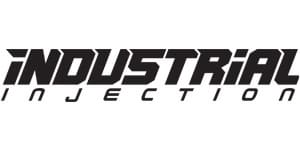July 5, 2021
It’s one of those experiences that diesel owners prefer to avoid. Having to choose between an expensive repair or operating at impaired efficiency. A diagnosis of a “failed” injector can cost thousands of dollars in replacement costs. However, a closer look at the problem reveals an interesting insight.
HOW DO INJECTORS WORK?
Since the introduction of the 7.3 L Ford Power Stroke in 1994, injectors have been relying on oil pressure to fire the piston via the HEUI fuel system. International pioneered the idea of electronically controlled diesel engines in pickups, which became commonplace on GM and Cummins diesels. Inside the injector, barely a thimble full of oil has the job of lubricating the piston, springs and o-rings. This oil is exposed to temperatures much higher than reported on your engine temp gauge. With enough time and heat, the oil breaks down and leaves a gummy residue on the inside of the injector. This “gumminess” can cause a slight hesitation in the piston or spring release which can cause a diagnosis computer to trigger a “failed injector” code. This gummy, sticky, friction is called stiction.

Frequently mechanics recommend replacing the injectors after the failure code is triggered. This is where the myth comes into play. While it is true that a replacement will solve the problem of an injector not performing correctly due to stiction, it is often unnecessary. The logic behind this replacement recommendation would be similar to replacing a leaky tire instead of plugging it, especially when there are plenty more miles to roll on that tire. Why replace an injector that is designed to go 1,000,000 miles? The elements of an injector are well crafted and can perform for the life of the engine. It is the stiction that is causing the failure, not the malfunctioning of the injector elements. Thus the “failed” injector myth.
HOW TO RESTORE CLOGGED INJECTORS?
While many drivers choose fuel additives to improve performance, the stiction that is causing an injector failure requires a Stiction Eliminator oil additive. This is often counter-intuitive to diesel owners who consider the injector as part of the fuel system, not the oil system. Injectors require both systems to perform. A problem-specific, high concentrate oil additive can remove the stiction and restore it to its original factory performance.
Common symptoms of stiction occur well before your mechanic runs the diagnostics on your engine. If you are experiencing slow starts or bucking and chugging, especially on cold mornings, stiction could be building up. If your diesel hesitates to accelerate or has been losing power, then you could be experiencing stiction. A steady and consistent drop in your MPG can also be an indicator of a stiction problem.
Chris Gabrelcik is certified with STLE as a CLS and OMA. He personally developed and tested a product designed to remove stiction called Hot Shot’s Secret Stiction Eliminator.







